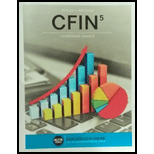
Concept explainers
Weighted Average Cost of Capital (WACC) is the required
An optimal capital structure of a company is a mix of debt, equity and preferred stock which can be used to maximize the company’s stock price. Therefore, a target proportion of capital structure and cost of each financing can be used to determine the WACC of the company.
Here,
Proportion of debt in the target capital structure “
Proportion of preferred stock in the target capital structure “
Proportion of equity in the target capital structure “
After tax cost of debt, preferred stock,
Marginal Cost of Capital (MCC) is the weighted average cost of capital for the last dollar raised in new capital. MCC of the company remains constant for some time after which it increases. This depends on the amount of additional capital raised and eventually increases as the cost of raising new capital is higher due to flotation cost. This is mostly evident in case of cost of equity, where first the retained earnings are utilized by the firms to meet their target capital structure and any excess fund required is raised through new equity. So, as new equity is added to the fund, the marginal cost of raising the fund also increases.
The target capital structure for the company is 60% debt, 10% preferred stock and 30% common equity. Marginal tax rate is 30%, with before tax cost of debt, cost of preferred stock, cost of retained earnings and cost of new equity being 5%, 7%, 11% and 13%, respectively. The company generates $27,000 in retained earnings and needs to raise $85,000 in capital.
Want to see the full answer?
Check out a sample textbook solution
- If blurr image please comment i will write values. please dont Solve with incorrect values otherwise unhelpful.arrow_forwardInferior Investment Alternatives Although investing requires the individual to bear risk, the risk can be controlled through the construction of diversified portfolios and by excluding any portfolio that offers an inferior return for a given amount of risk. While this concept seems obvious, one of your clients, Laura Spegele, is considering purchasing a stock that you believe will offer an inferior return for the risk she will bear. To convince her that the acquisition is not desirable, you want to demonstrate the trade-off between risk and return. While it is impractical to show the trade-off for all possible combinations, you believe that illustrating several combinations of risk and return and applying the same analysis to the specific investment should be persuasive in discouraging the purchase. Currently, U.S. Treasury bills offer 2.5 percent. Three possible stocks and their betas are as follows: 1. What will be the expected return and beta for each of the following portfolios? a.…arrow_forwardSolve this fin. Qn no aiarrow_forward
- what do you know about finance? explain all no aiarrow_forwardWhat is corporate finance? how many types of corporate finance??arrow_forwardEsfandairi Enterprises is considering a new three-year expansion project that requires an initial fixed asset investment of $2,350,000. The fixed asset will be depreciated straight-line to zero over its three-year tax life, after which time it will be worthless. The project is estimated to generate $3,310,000 in annual sales, with costs of $2,330,000. Assume the tax rate is 23 percent and the required return on the project is 11 percent. What is the project's NPV? Note: A negative answer should be indicated by a minus sign. Do not round intermediate calculations and round your answer to 2 decimal places, e.g., 32.16.arrow_forward
 EBK CONTEMPORARY FINANCIAL MANAGEMENTFinanceISBN:9781337514835Author:MOYERPublisher:CENGAGE LEARNING - CONSIGNMENT
EBK CONTEMPORARY FINANCIAL MANAGEMENTFinanceISBN:9781337514835Author:MOYERPublisher:CENGAGE LEARNING - CONSIGNMENT

